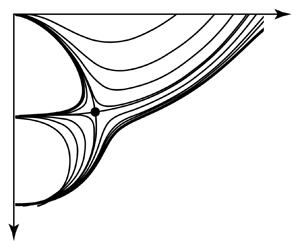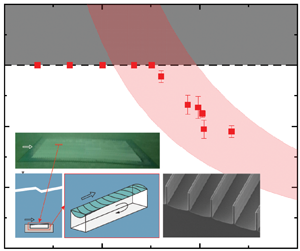doi:10.1017/jfm.2023.293 Sarath et al. The onset of turbulence in decelerating diverging channel flows
JFM Rapids
Experimental study of the mutual interactions between waves and tailored turbulence
-
- Published online by Cambridge University Press:
- 26 April 2023, R1
-
- Article
-
- You have access
- Open access
- HTML
- Export citation
Focus on Fluids
Wave turbulence in geophysical flows
-
- Published online by Cambridge University Press:
- 27 April 2023, F1
-
- Article
-
- You have access
- HTML
- Export citation
JFM Papers
Flattening of a hollow droplet impacting a solid surface
-
- Published online by Cambridge University Press:
- 26 April 2023, A1
-
- Article
-
- You have access
- Open access
- HTML
- Export citation
Asymptotic ultimate regime of homogeneous Rayleigh–Bénard convection on logarithmic lattices
-
- Published online by Cambridge University Press:
- 26 April 2023, A2
-
- Article
- Export citation
Thin disks falling in air
-
- Published online by Cambridge University Press:
- 26 April 2023, A3
-
- Article
-
- You have access
- Open access
- HTML
- Export citation
Absolute instability of plane incompressible jets
-
- Published online by Cambridge University Press:
- 28 April 2023, A4
-
- Article
- Export citation
Parameterisation of small-scale random forcing in β-plane turbulence
-
- Published online by Cambridge University Press:
- 26 April 2023, A5
-
- Article
-
- You have access
- Open access
- HTML
- Export citation
Stability theory for metal pad roll in cylindrical liquid metal batteries
-
- Published online by Cambridge University Press:
- 26 April 2023, A6
-
- Article
- Export citation
Linear response analysis of supersonic turbulent channel flows with a large parameter space
-
- Published online by Cambridge University Press:
- 27 April 2023, A7
-
- Article
-
- You have access
- Open access
- HTML
- Export citation
Scaling CO2–brine mixing in permeable media via analogue models
-
- Published online by Cambridge University Press:
- 27 April 2023, A8
-
- Article
-
- You have access
- Open access
- HTML
- Export citation
Sustainability of the plastron on nano-grass-covered micro-trench superhydrophobic surfaces in high-speed flows of open water
-
- Published online by Cambridge University Press:
- 27 April 2023, A9
-
- Article
-
- You have access
- Open access
- HTML
- Export citation
Effects of gravity on natural oscillations of sessile drops
-
- Published online by Cambridge University Press:
- 27 April 2023, A10
-
- Article
-
- You have access
- HTML
- Export citation
Bubble collapse near porous plates
-
- Published online by Cambridge University Press:
- 27 April 2023, A11
-
- Article
-
- You have access
- Open access
- HTML
- Export citation
Stability of drawing of microstructured optical fibres
-
- Published online by Cambridge University Press:
- 27 April 2023, A12
-
- Article
- Export citation
Vortex-induced vibration forever even with high structural damping
-
- Published online by Cambridge University Press:
- 27 April 2023, A13
-
- Article
-
- You have access
- Open access
- HTML
- Export citation
Pre-asymptotic dispersion of active particles through a vertical pipe: the origin of hydrodynamic focusing
-
- Published online by Cambridge University Press:
- 27 April 2023, A14
-
- Article
- Export citation
Bubble-induced oscillating flow in microbubble emission boiling under highly subcooled conditions
-
- Published online by Cambridge University Press:
- 27 April 2023, A15
-
- Article
- Export citation
POD-based study of turbulent plane Poiseuille flow: comparing structure and dynamics between quasi-linear simulations and DNS
-
- Published online by Cambridge University Press:
- 28 April 2023, A16
-
- Article
-
- You have access
- Open access
- HTML
- Export citation
Interaction of mode-one internal solitary waves of opposite polarity in double-pycnocline stratifications
-
- Published online by Cambridge University Press:
- 28 April 2023, A17
-
- Article
-
- You have access
- Open access
- HTML
- Export citation
Effect of flow–thermodynamics interactions on the stability of compressible boundary layers: insights from Helmholtz decomposition
-
- Published online by Cambridge University Press:
- 28 April 2023, A18
-
- Article
-
- You have access
- Open access
- HTML
- Export citation




































































